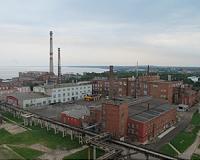 |
Paris, France (ESA) Dec 14, 2010 Technology developed for the International Space Station and a Mars rover is helping European auto-parts manufacturers to engineer lighter, stronger and safer drivetrains and axles. Bolts are the manufacturing world's unsung heroes. If two parts aren't welded together, there's probably a bolt at work and an engineer figuring out how tight it needs to be. Stretch it too much and it might damage the parts. Too loose, it may wiggle. Using space-sensor technology, German company Intellifast has created a bolt with an internal sensor to measure the stress while the bolt is in place. MST Aerospace, the technology broker of ESA's Technology Transfer Programme, helped Intellifast to work with ZF Lemforder, who builds components for the automotive industry. Now these bolts with 'space tech inside' are being used to make better cars.
The art of tightening bolts "If you want to do an ultrasound scan on your pregnant wife, you have to put glycerin on her belly," says Intellifast engineer Frank Scheuch. "If you want to do an ultrasound on a bolt, you have to put a coupling liquid on the bolt and use a handheld sensor." But relying on technicians to apply the liquid properly and hold the sensor correctly isn't good enough for many applications. "If you measure five times with the same person, you get five different readings," explains Scheuch. Add in the complexity of accessing bolts in, say, fighter jets or offshore wind turbines and it is clear a more reliable solution is needed.
Space had the answer A technician attaches a meter to perform an ultrasound sweep and measure the strain on the bolt. The meter can also be attached to the torque wrench so the bolt's condition can be tracked even as it is screwed into place. The same approach was used on NASA's Mars Pathfinder rover. With torque wrenches or ultrasound, bolt tightening could be off by as much as 30% of the bolt's true strength, resulting in over-sized and heavier bolts to ensure they hold. In space and aviation this can be extremely costly. By precisely measuring a bolt load it can be lighter and still be within a safe margin of error - 3%, according to Scheuch. Now designers use PMT bolts in their search for lighter cars. "In some cases, we really do have to know the exact clamp load," says ZF Lemforder engineer Ferry Oude Kotte. "The really good thing about Intellifast's solution is we don't have to alter the connection itself to conduct tests. The result is better, safer cars made possible with bolt-technology developed for space."
Share This Article With Planet Earth
Related Links ESA Technology Transfer Programme Space Technology News - Applications and Research
 Estonia's rare earth break China's market grip
Estonia's rare earth break China's market gripTallinn (AFP) Dec 1, 2010 High-tech firms across the globe have been hit hard by China's slashing of rare earth metals exports but it is turning out to be good news for Estonia's small Silmet factory. "Unless China will change the quota, the prices of rare earth metals will at least double for next year," Silmet CEO David O'Brock told AFP. "We have never been able to keep up with demand. New inquiries are coming ... read more |
|
| The content herein, unless otherwise known to be public domain, are Copyright 1995-2010 - SpaceDaily. AFP and UPI Wire Stories are copyright Agence France-Presse and United Press International. ESA Portal Reports are copyright European Space Agency. All NASA sourced material is public domain. Additional copyrights may apply in whole or part to other bona fide parties. Advertising does not imply endorsement,agreement or approval of any opinions, statements or information provided by SpaceDaily on any Web page published or hosted by SpaceDaily. Privacy Statement |